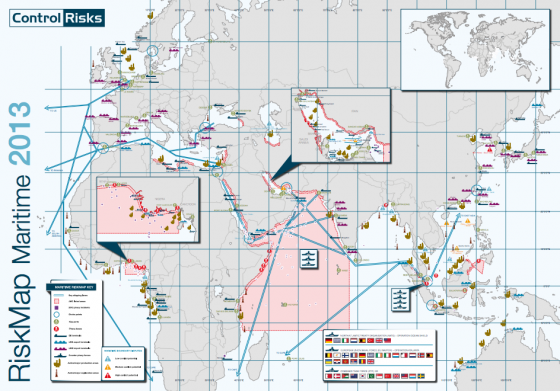 Your broker will help you determine your insurance needs, go out to market, and obtain competitive quotes. She’ll guide you through the buying process, price negotiations and policy terms. She might even take you out to a nice lunch and introduce you to the key players at your carrier. There’s no debating it – your broker is a great help when you’re purchasing insurance.
Your broker will help you determine your insurance needs, go out to market, and obtain competitive quotes. She’ll guide you through the buying process, price negotiations and policy terms. She might even take you out to a nice lunch and introduce you to the key players at your carrier. There’s no debating it – your broker is a great help when you’re purchasing insurance.
But the one thing your broker won’t help you with is paying your insurance bill. For that, you’ll need a budget.
Preparing an insurance budget is a lot like splitting the tab after an expensive meal. You’re pretty sure that everyone sitting at the table should pay something, but how much? Should the bill be divided evenly? Should each person pay according to what he ordered? Should you skip all the awkwardness and just pay the thing yourself?
The answer, or course, depends on your company’s structure and costs.
Chances are, you’ve purchased multiple lines of coverage, and your broker or insurers have billed you for each.
Furthermore, unless you’re running full speed ahead with a full guaranteed-cost program, you have claim expenses as well. For each line of coverage, then, you need to somehow allocate the costs of claims and premium among all your dinner guests, even the one who somehow always manages to make it to the restroom just as the bill is coming out.
Normally, at a restaurant, the bill is split up after the waiter drops it off. But when making an insurance budget, many items need to be forecasted. Future premiums are best estimated by your broker, using either her expectations for your own policies or general market trends. Future claim costs, on the other hand, can be estimated based on past activity and an adjustment for inflation or growth. In most cases, it’s better to slightly overestimate than underestimate.
Once your forecasting is complete, the next thing you should determine is just who should be at the table. Should your bill be divided by operating companies, divisions, brands, cost centers, locations, groups or in some other manner? Can you provide a general allocation that will further be subdivided by each participant, or will you need to get to a more granular level of detail? Figuring out the best way to do this may be more work than just doing it “however it was done last year,” but in the long run, it will save you time and aggravation.
Once you’ve settled on just who is going to pay for the bill, you’ve got to determine how much each should pay. For most companies, insurance is a significant expense, and you must be prepared to answer questions from disgruntled division heads about their charges.
Your initial temptation may be to divide costs based on headcount, and for many lines of coverage this is both simple and practical. If one division comprises 20% of the company’s employees, that division is charged 20% of the cost. But allocating all your costs on this principle runs into a couple of pitfalls. First, your insurance utilization may not agree with your headcounts. For example, a division without a single car will be charged a portion of the automobile liability premium. Second, this does not reward divisions that have better loss experience.
Premium costs are best charged to the division that actually generates the premium. In the breakdown of each premium bill, you should be able to see how the premium was calculated. In all likelihood, your workers compensation charges are based on your payroll; your auto may be based on vehicles or listed drivers; product liability may be based on sales; property may be based on building values. This methodology better matches the costs of insurance to the divisions that benefit from it.
For insurance premiums billed at a flat rate – well, pick a methodology, be it sales, headcount or something else – and stick with it as long as it makes sense.
If there’s enough data to support it, claim costs may be best distributed based on loss history. This both assigns the costs to the divisions that are creating the risk and creates accountability. A particularly troublesome division may grumble about this, but the explanation is an easy and effective one: tell them to reduce their claims. For lines of coverage without sufficient loss history, claims costs may best be distributed in the same manner as premium.
Making your insurance budget doesn’t need to be a highly-choreographed version of the check dance. Pick the bill up, tell each person what he owes, and be prepared to explain why. And when one of your guests starts complaining about his portion, remind him that if wants to order the triple-chocolate almond crème brulee, he has to pay for it, too.





